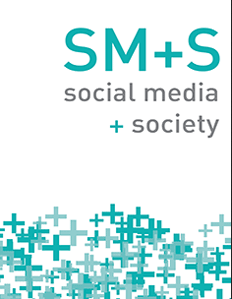秘鲁的社交媒体、心理距离和环保集体行动
IF 5.5
1区 文学
Q1 COMMUNICATION
引用次数: 0
摘要
本研究旨在分析不同类型的心理距离(社会距离、时间距离、空间距离和概率距离)和集体行动社会认同模型(SIMCA)变量对社交媒体的使用与暴力环境集体行动之间关系的连锁中介效应。研究样本包括利马 650 名 18-35 岁的大学生(男 = 20.8,女 = 2.74)。研究使用 AMOS SPSS 软件进行结构方程建模(SEM)分析,针对每种心理距离类型建立统计模型。研究结果表明,从社交媒体到暴力环境集体行动之间存在两条具有统计学意义的路径,第一条路径以每种心理距离为中介,第二条路径以社会认同和负面情绪(愤怒和恐惧)为中介。此外,研究还发现,在社交媒体与暴力环境集体行动之间的关系中,只有概率距离本身起到了中介作用。研究还发现,从社交媒体到暴力环境集体行动的路径首先受到三种距离(概率距离、空间距离和时间距离)的影响,其次受到参与效率的影响。本文章由计算机程序翻译,如有差异,请以英文原文为准。
Social Media, Psychological Distance, and Environmental Collective Action in Peru
This research aims to analyze the chain-mediated effect of the different types of psychological distances (social, temporal, spatial, and probability) and the variables of the Social Identity Model of Collective Action (SIMCA) on the relationship between the use of social media and violent environmental collective action. The study sample consisted of 650 university students ( M = 20.8, SD = 2.74) aged 18–35 years from Lima. Analyses were conducted by means of structural equation modeling (SEM) using the AMOS SPSS software, where a statistical model was performed for each type of psychological distance. The findings revealed two statistically significant paths that go from social media to violent environmental collective action, mediated, first, by each of the psychological distances and, second, by social identity and negative emotions (anger and fear). In addition, it was observed that only probability distance on its own acted as a mediator in the relationship between social media and violent environmental collective action. It was also observed that a path from social media to violent environmental collective action was mediated, first, by three types of distances (probability, spatial, and temporal) and, second, by participative efficacy.
求助全文
通过发布文献求助,成功后即可免费获取论文全文。
去求助
来源期刊

Social Media + Society
COMMUNICATION-
CiteScore
9.20
自引率
3.80%
发文量
111
审稿时长
12 weeks
期刊介绍:
Social Media + Society is an open access, peer-reviewed scholarly journal that focuses on the socio-cultural, political, psychological, historical, economic, legal and policy dimensions of social media in societies past, contemporary and future. We publish interdisciplinary work that draws from the social sciences, humanities and computational social sciences, reaches out to the arts and natural sciences, and we endorse mixed methods and methodologies. The journal is open to a diversity of theoretic paradigms and methodologies. The editorial vision of Social Media + Society draws inspiration from research on social media to outline a field of study poised to reflexively grow as social technologies evolve. We foster the open access of sharing of research on the social properties of media, as they manifest themselves through the uses people make of networked platforms past and present, digital and non. The journal presents a collaborative, open, and shared space, dedicated exclusively to the study of social media and their implications for societies. It facilitates state-of-the-art research on cutting-edge trends and allows scholars to focus and track trends specific to this field of study.
 求助内容:
求助内容: 应助结果提醒方式:
应助结果提醒方式:


